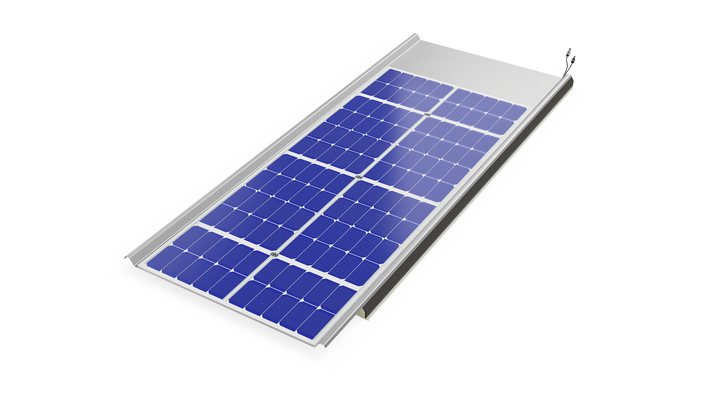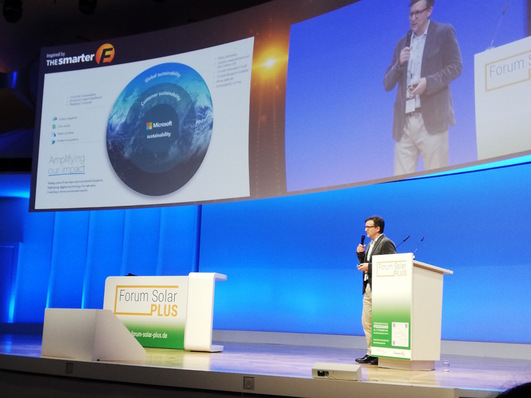As reported by the architecture portal Solar Age, Klimagut Immobilien has realised a sustainable quarter in Berlin in cooperation with Peter Ruge Architekten and the Berlin Energy Agency (BEA). The construction as well as the operation of the two buildings in the Schleizer Straße in the northern district of Lichtenberg are based on a particularly sustainable approach. "Starting with the use of particularly high-quality and durable building materials, through the climate-positive energy supply from 100 per cent renewable energies, to the wood hybrid construction method: This project is exemplary in terms of both construction and operation," emphasises Fabian Tacke, CEO of Klimagut Immobilien. "More climate protection in the building sector is hardly possible at the moment."
Solar system on green roof
At the heart of the completely renewable energy supply are photovoltaic systems on the green flat roofs of the two houses. "Photovoltaics combined with a green roof is an ideal combination in cities to generate more clean electricity decentrally and at the same time create more vegetated areas for a better urban climate," says Michael Geißler, managing director of BEA. The green roofs also acted as a natural air conditioning and thermal insulation for the building.
Tenant power concept implemented
The solar electricity is consumed directly on site. This is because BEA has implemented a tenant electricity concept in which the residents of the buildings can buy the solar energy together with green electricity from the grid at a more cost-effective price. "With our tenant electricity offer, we are around 20 per cent more cost-effective than the local basic supply tariff," said Michael Geißler.
Biogas for heat supply
According to BEA, the heat costs are also well below the usual market level. This is generated by a combined heat and power plant (CHP) that runs entirely on biogas. The biogas, in turn, is produced exclusively from residual materials, so that no agricultural land is lost for this purpose. THE CHP also provides electricity for the buildings in the darker autumn and winter months. In this way, the two buildings become net zero-emission houses. Because they actually save more CO2 during operation than they emit. "In Schleizer Straße, we have incorporated many decentralised climate protection technologies that are currently available to us as an energy supplier and service provider," says Michael Geißler, summarising the innovative approach that was implemented in the project.
Charging points for electric vehicles installed
The concept includes not only the supply of electricity and heat, but also climate-friendly mobility. For this purpose, charging columns for electric vehicles were installed in front of the buildings, which are also supplied with solar power from the roof. "Schleizer Straße is a successful showcase project that demonstrates that climate-positive living is feasible through intelligent networking of building and energy technology," Geißler emphasises. "In addition, we also placed special emphasis on social compatibility and integrated affordable rents and energy prices, assisted living, accessibility, space efficiency and a balanced mix of tenants into our concept."
See also: The potential of solar district heating
A total of 42 rental flats were built in Schleizer Strasse. All flats are accessible without barriers to a large extent. "From the very beginning, the goal was to plan the various desired flat types and sizes in a compact way, thus enabling affordable rents and minimising the consumption of resources," says Matthias Matschewski, partner at Peter Ruge Architekten. In addition, no critical building materials such as PVC, halogens, polystyrene and aluminium were used. (su/mfo)







